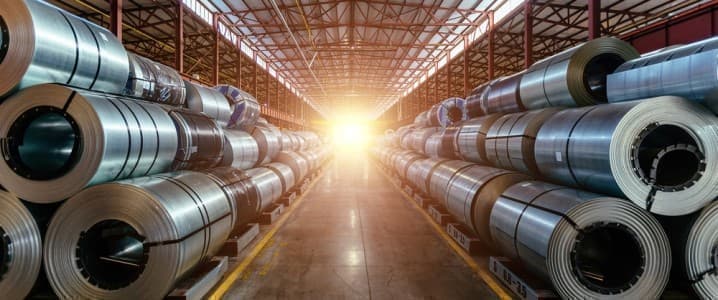
The U.S. stainless steel market has maintained steady prices, with the Stainless Monthly Metals Index (MMI) reflecting a modest increase of 1.69% from August to September 2023. Domestic mills have successfully upheld base price increases, reversing the historically high discounts seen over previous years. Despite ongoing uncertainties surrounding trade policies, particularly the 50% tariffs on steel and steel-containing products, the market remains stable.
Mills have capitalized on these tariffs, allowing for increased production capacity even as the U.S. manufacturing sector has faced a prolonged contraction. Although demand for stainless steel products appears unchanged, procurement organizations are shifting toward domestic sourcing, driven by a desire to manage risks associated with international trade fluctuations. Reports indicate that while bright annealed products and ferritics are in tighter supply compared to austenitics, there are currently no significant shortages of common grades like 304.
Trade Policy and Market Conditions
Trade negotiations with both the European Union and the United Kingdom may pave the way for tariff rate quota agreements, potentially reshaping the competitive landscape for U.S. stainless steel suppliers. According to Outokumpu, the European stainless market experienced significant weakness in Q2 2023, which could lead to tariff-free shipments that would benefit buyers seeking to secure materials at lower costs.
Furthermore, discussions with Canada and Mexico continue, which may create additional challenges for U.S. mills if new agreements are established. Notably, countries such as Vietnam and Taiwan remain subject to heavy tariffs, limiting their competitiveness in the U.S. market. As suppliers prepare for the upcoming contracting season, there is a consensus that mills are unlikely to reduce discounts significantly, even if market conditions do not support further price hikes.
Despite the current stability in prices, the balance of power could shift in the upcoming year. The expansion of domestic production capacity, notably at North American Stainless’s Ghent facility, will add a new cold rolling mill, enhancing the company’s ability to meet future demand. The completion of this facility is anticipated by the end of 2025, although no specific date has been confirmed.
Nickel Market Insights
The nickel market remains relatively calm, which has contributed to a stable surcharge since the start of 2023. While oversupply continues to plague the market, there are no substantial bearish trends to suggest a decline in prices, which had previously been driven lower in recent years. Environmental violations and low prices have led to closures within the nickel sector, and any further price declines may necessitate capacity cuts.
The significant growth of Indonesia’s nickel industry has exacerbated global overcapacity issues, with demand expectations from the electric vehicle sector proving overly optimistic. As a result, exchange inventories are at a four-year high, with the London Metal Exchange (LME) and Shanghai Futures Exchange (SHFE) both showing ample stock levels. Such conditions are likely to hinder any meaningful increase in nickel prices in the near future.
In summary, while U.S. stainless steel prices have remained steady amidst trade uncertainties, the evolving nature of international trade agreements and domestic capacity expansions will be crucial factors influencing the market landscape in the months ahead.






